While the old stereotype is that marijuana users are lazy, many modern cannabis fans are avid fitness enthusiasts. People are using cannabis pre and post-workout, and some even say they use it to improve their athletic performance. But can marijuana really help you work out?
Anecdotal and scientific evidence that suggests marijuana may help improve post-workout recovery and help you enjoy exercising more. Let’s go over five ways marijuana could help you work out.
Cannabis and Enjoying Exercise

Anecdotally speaking, many people say weed helps them focus and get in the zone for their workouts, and just generally makes the process more fun. When working out is more enjoyable, it creates a more positive relationship with fitness. In turn, that can make you want to work out again in the future.
There haven’t been many studies done on cannabis and working out, specifically. However, findings from other studies can give a clue as to why people say cannabis makes their workout routines more fun. Studies have shown that low doses of marijuana can be good for stress reduction and cognitive function, both of which could make working out more enjoyable.
With that said, high doses of THC aren’t ideal for heavy workouts, workouts requiring precise timing, or workouts requiring excellent motor skills. THC can slow reaction times and decrease stability. So while many enjoy using low-dose cannabis for lighter workouts, it’s not a great idea to consume a high dose of THC right before lifting weights or doing complex forms of exercise.
Cannabis and Reducing Inflammation
Cannabis’s ability to reduce inflammation has been intensely studied. Many studies show that marijuana appears to have anti-inflammatory properties, which may give it the ability to do things like ease chronic pain and reduce swelling.
After you exercise, you will experience some inflammation. Inflammation is a crucial part of building muscle mass, increasing blood flow, and recovering post-workout. However, while some inflammation is expected, you don’t want to experience intense inflammation after a workout. Intense inflammation can cause pain, soreness, and stiffness in the short-term. Long-term, it can lead to chronic inflammation and a wide range of health issues.
You can take steps to ensure you don’t experience excessive inflammation after a workout. Many things recommended by trainers–like stretching, massage, and taking rest days–can help keep inflammation levels down. Consuming things with anti-inflammatory effects, such as cannabis, may also help keep inflammation levels down.
Cannabis and Pain Relief

Numerous studies suggest that cannabis can ease pain. Medical marijuana studies have found that the compounds in marijuana plants can ease muscle pain, joint pain, and even nerve pain.
Some experts, such as psychology and neuroscience professor Angela Bryan, say that this may help people stay active, especially older people. “As we get older, exercise starts to hurt, and that is one reason older adults don’t exercise as much,” says Bryan. “If cannabis could ease pain and inflammation, helping older adults be more active, that could be a real benefit.”
Cannabis and Easing Muscle Spasms
While muscle spasms can be a normal part of the muscle recovery process, they’re uncomfortable to experience. Some studies show that marijuana may have medicinal properties that can help those experiencing spasms. Research has found that cannabis can help treat muscle spasms related to the diseases multiple sclerosis and Parkinson’s, and animal studies suggest it could help reduce post-workout muscle spasms.
Cannabis and Sleep

Getting better sleep benefits not only your athletic performance, but also your overall wellness. And improved sleep happens to be one of the most studied benefits of marijuana. THC can induce sleep, while CBD may improve sleep quality and help reduce daytime fatigue. For athletes who struggle with sleep quality or duration, a CBD or cannabis product could be beneficial.
Final Thoughts
Many people enjoy incorporating marijuana into their fitness plan, but only you can decide if that would be right for your health. If you’re considering using cannabis as a part of your workout regiment, experts typically recommend starting with a low dose and gentle exercise. Start low and slow, then see how you feel from there.
If you're a cannabis enthusiast or a beginner exploring the world of cannabis, you may have come across the terms "Sativa" and "Indica." These are two main types of cannabis plants that have distinct characteristics and effects. Understanding the differences between Sativa and Indica can help you make informed choices when selecting strains for your preferences and needs.
In this blog, we'll explore the key differences between Sativa and Indica, including their physical characteristics, effects, and terpene content. Let's dive into the fascinating world of Sativa vs. Indica and unravel how they differ!
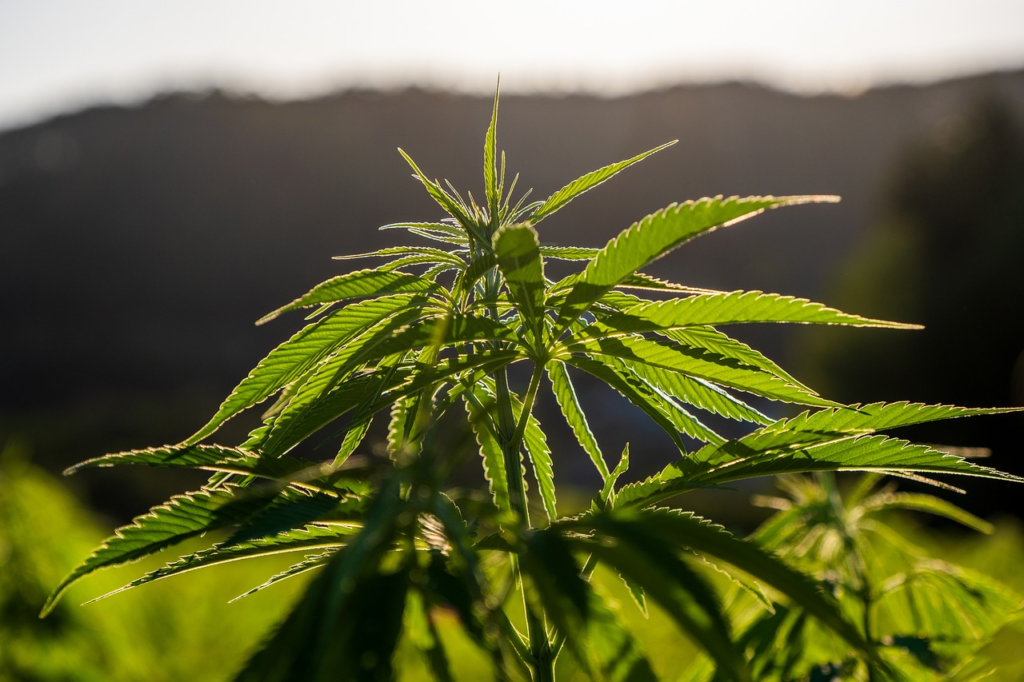
Sativa strains are believed to have originated in equatorial regions, such as parts of Africa, Southeast Asia, and South America. Historically, Sativa plants were cultivated for their fiber, seeds, and medicinal properties. Sativa strains are known for their tall and thin plants with narrow leaves, and they are often associated with uplifting and energizing effects.
Indica strains are believed to have originated in the Hindu Kush region of the Indian subcontinent. Indica plants are typically shorter and bushier with wider leaves, and they are known for their sedating and relaxing effects. Indica strains were historically used for their medicinal properties, including pain relief and relaxation.
Over time, cannabis cultivation and hybridization have resulted in a wide range of Sativa, Indica, and hybrid strains with varying characteristics. Today, the terms Sativa and Indica are commonly used to categorize cannabis strains based on their purported effects and physical traits, although the scientific validity of these classifications is debated.
Understanding the historical origins and evolution of Sativa and Indica can provide a foundation for further exploration of their differences in terms of plant morphology, effects, medicinal properties, growing requirements, aroma and flavor profiles, and popular strains. Cannabis laws and regulations vary by region, and it's essential to comply with local laws when growing, using, or discussing cannabis-related topics.
The physical characteristics of Sativa and Indica cannabis strains can vary significantly, providing valuable clues for identifying and differentiating between them. Understanding these differences can help cannabis enthusiasts and growers recognize the unique traits of each subspecies.
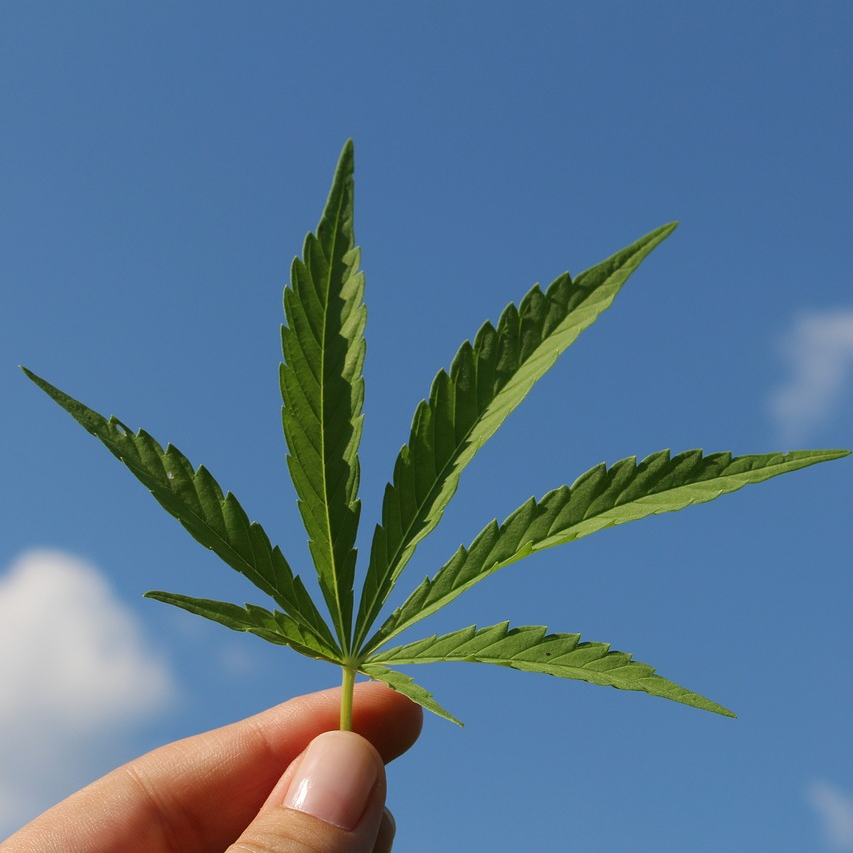
Sativa plants are known for their tall and thin structure, with long branches and narrow leaves. Sativa leaves tend to have more space between each leaflet, giving them a feathery appearance. Sativa strains can reach heights of up to 20 feet or more in some cases, making them ideal for outdoor cultivation in regions with longer growing seasons. Sativa buds are typically less dense and have a looser structure, with longer and thinner buds.
In contrast, Indica plants are generally shorter and bushier, with shorter branches and wider leaves. Indica leaves tend to be broader and thicker compared to Sativa leaves, and the leaflets are often closely spaced. Indica strains are well-suited for indoor cultivation due to their compact size and shorter flowering times. Indica buds are typically denser and have a tighter structure, with shorter and thicker buds.
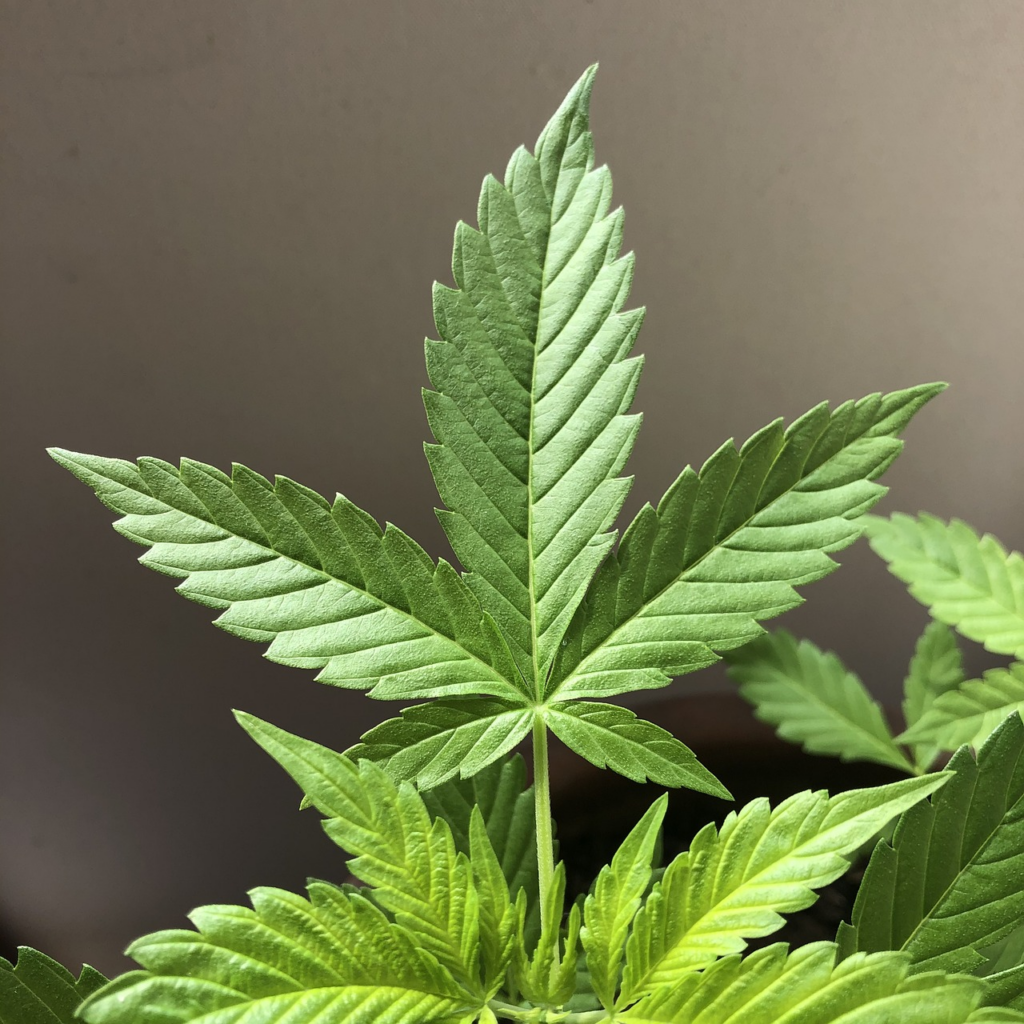
Another factor that can influence the effects of Sativa and Indica strains is the climate in which they are grown. Sativa strains are typically associated with a warm and dry climate, such as those found in tropical regions, while Indica strains are often found in dry and cooler climates.
The distinction between Sativa and Indica strains may not always be clear-cut, as many cannabis strains today are hybrids that exhibit a combination of traits from both subspecies. Consulting reputable sources and conducting genetic testing can provide more accurate information about the genetic makeup of a particular cannabis strain.

The effects and highs produced by Sativa and Indica cannabis strains can vary significantly, offering distinct experiences for users.
Terpene content, or the aromatic compounds found in cannabis plants, can play a significant role in the effects of Sativa and Indica strains.
Sativa strains tend to have higher levels of certain terpenes that can produce a more uplifting and energizing effect, while Indica strains may contain different terpenes that can promote more calming and sedative effects.
When it comes to sativa effects, these strains are often favored for their uplifting and stimulating effects, making them popular for daytime use. Sativa products, such as flower, concentrates, and edibles, are commonly found in marijuana dispensaries and are sought after for their ability to provide increased focus, creativity, and sociability.

Indica strains are typically associated with calming, relaxing, and sedating effects. They are known to induce deep relaxation, promote sleep, and relieve stress and anxiety. Indica strains are often preferred for evening or nighttime use, or for relaxation and stress relief purposes.
Indica strains are known for their calming effects and are often used for relaxation and stress relief. Indica strains can be beneficial for managing conditions such as muscle pain, insomnia, and anxiety due to their sedative effects. Indica products are also commonly used for promoting appetite and alleviating appetite loss.
It's important to note that the effects of Sativa and Indica strains on the human body can vary depending on individual tolerance, dosage, and other factors. While there is scientific evidence supporting some of the common effects attributed to Sativa and Indica strains, it's also important to consider that the psychoactive effects of cannabis can be subjective and vary from person to person.
Like any substance, cannabis can have potential negative side effects. Sativa strains, known for their intense effects, may not be suitable for everyone and may cause negative effects such as anxiety, paranoia, or increased heart rate. Indica strains, with their sedative effects, may cause drowsiness or impaired coordination in some individuals.
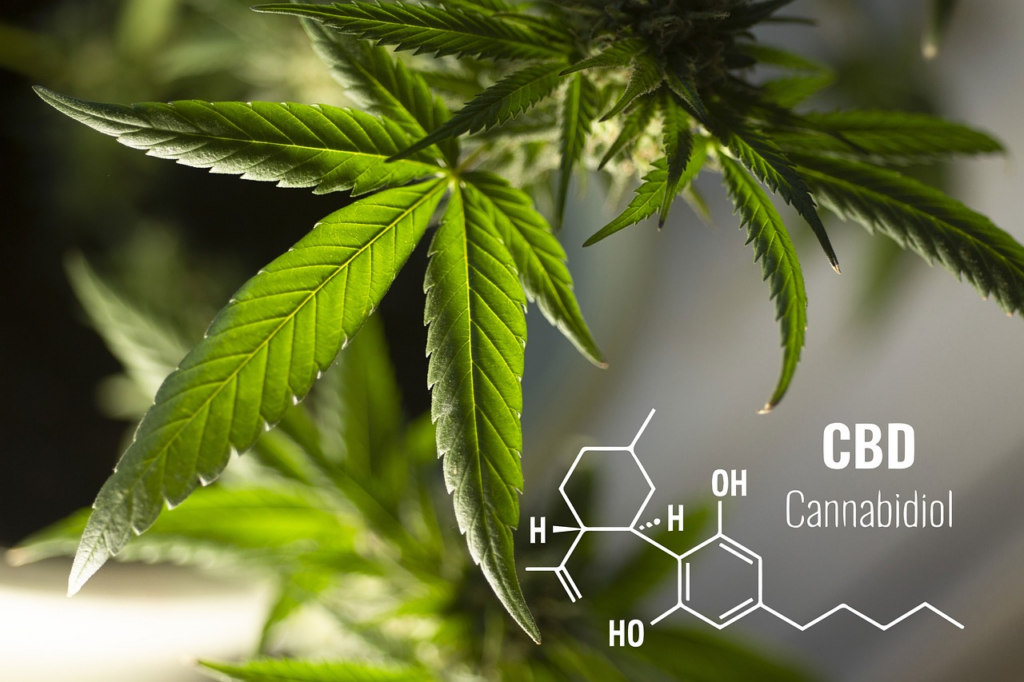
Both Sativa and Indica are known for their therapeutic properties, but they can offer distinct benefits due to their differing characteristics.
Sativa strains are often associated with uplifting and energizing effects, which can make them beneficial for managing conditions such as depression, fatigue, and mood disorders. Sativa strains are also known for their potential to enhance creativity, focus, and sociability, making them suitable for those seeking relief from symptoms of ADHD, PTSD, or social anxiety.
Indica strains are typically associated with calming and relaxing effects, which can make them useful for managing conditions such as anxiety, stress, and insomnia. Indica strains are also known for their potential to provide pain relief, muscle relaxation, and anti-inflammatory effects, making them suitable for those seeking relief from conditions such as chronic pain, muscle spasms, and arthritis.
Furthermore, both Sativa and Indica strains can contain varying levels of cannabinoids and terpenes, which can further influence their therapeutic effects. For example, Sativa strains may be higher in THC, which can provide euphoric effects, while Indica strains may be higher in CBD, which can provide anti-inflammatory and analgesic effects.
The therapeutic benefits of Sativa and Indica strains can vary depending on the individual and their specific health needs. Consulting with a healthcare professional and experimenting with different strains and dosages can help individuals find the strain that best suits their therapeutic needs.
The aroma and flavor profiles of cannabis strains can offer a unique sensory experience, with Sativa and Indica strains often displaying distinct differences.
Sativa strains are known for their uplifting and energetic effects, and their aroma and flavor profiles often reflect this. Sativa strains tend to have a more citrusy, fruity, and sweet aroma, with notes of lemon, pine, and tropical fruits. The flavor profile of Sativa strains can be described as bright, tangy, and refreshing, with hints of citrus, herbs, and spices.
Indica strains are typically associated with calming and relaxing effects, and their aroma and flavor profiles can differ from Sativa strains. Indica strains often have a more earthy, musky, and skunky aroma, with notes of pine, spice, and herbs. The flavor profile of Indica strains can be described as rich, deep, and savory, with hints of earthy, woody, and sweet flavors.
The aroma and flavor profiles of cannabis strains can also be influenced by various factors, including cultivation methods, terpene profiles, and curing processes. Additionally, individual perception and preference for aroma and flavor can vary. Experimenting with different strains and paying attention to the aroma and flavor profiles can add another layer of enjoyment to the cannabis experience for those who appreciate the sensory aspects of cannabis.
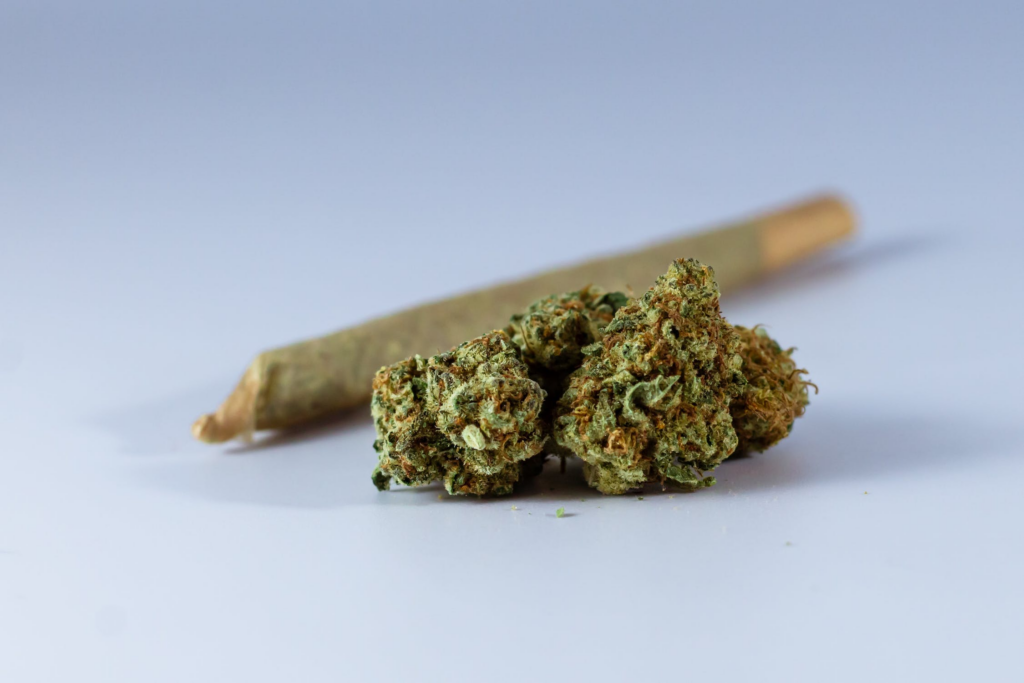
Indica strains such as Bubba Kush are known for their relaxing and sedative effects, making them a popular choice for those seeking relief from muscle pain, anxiety, and insomnia.
Sativa strains like Sour Diesel, Pineapple Express, and Blue Dream are often associated with uplifting and energizing effects, making them sought-after options for those looking for increased creativity, focus, and mood elevation.
Whether you're a fan of the calming effects of Indica or the invigorating effects of Sativa, there are numerous strains to choose from to suit your preferences and needs at marijuana dispensaries. It's essential to do your research and consult with knowledgeable budtenders to find the right strain that aligns with your desired effects and overall experience.
In conclusion, Sativa and Indica strains of cannabis offer distinct effects that can be beneficial for different purposes. The effects of cannabis can vary depending on individual factors and consulting with a healthcare professional or budtender at a marijuana dispensary can provide personalized guidance.
Exploring the history, physical characteristics, effects, and aroma/flavor profiles of Sativa and Indica strains can help you make informed choices when selecting cannabis strains that align with your preferences and health needs. Consulting with a healthcare professional and experimenting with different strains can also aid in finding the right strain for your individual requirements.
If you're looking to experience the diverse world of Sativa and Indica strains, visit DC Collective, a trusted cannabis dispensary. With a wide selection of premium cannabis products, knowledgeable staff, and a commitment to quality, DC Collective is your destination for top-notch cannabis strains and a personalized cannabis experience.
Ready to explore the world of Sativa and Indica strains? Visit DC Collective, your premier cannabis dispensary, to discover a wide selection of high-quality cannabis products. Whether you're a seasoned cannabis enthusiast or new to the world of cannabis, our knowledgeable staff is here to assist you in finding the perfect strain for your needs. Don't miss out on the diverse and unique characteristics of Sativa and Indica cannabis strains - visit DC Collective today!

Cannabis flower is available in various quantities, ranging from small measurements like grams of cannabis to a full ounce of cannabis. Understanding the different measurements is crucial when it comes to purchasing cannabis flower. This complete guide to cannabis flower is designed to provide an overview of the different measurements available and offer tips for checking the quality and prices of cannabis products.
This complete guide to cannabis flower not only covers the different measurements available but also delves into the potential health benefits and risks associated with cannabis use. Cannabis has been studied for its potential therapeutic effects on various medical conditions, such as chronic pain, anxiety, and epilepsy. It's important to note that while cannabis may have potential benefits, there are also potential risks and adverse effects to consider.
Additionally, this guide provides valuable information on the various cannabis strains and their effects. With so many strains available in the market, it's essential to understand the different characteristics and effects of each strain. By knowing this information, you can choose the strain that best suits your needs and preferences. Whether you're looking for a strain to help with anxiety or one to boost creativity, this guide has got you covered.
Whether you're a seasoned cannabis user or a novice, this complete guide to cannabis flower will provide you with the information and guidance you need to make informed decisions when purchasing cannabis products. By understanding the different measurements, quality, prices, and strains available, you can ensure that you're getting the best possible experience from this versatile and potentially therapeutic plant.

A gram of weed is the smallest and most common unit of measurement in the cannabis industry. It's a convenient and cost-effective way to try out new strains or to use for personal consumption. While it may seem like a small amount, a gram of weed can provide a satisfying experience and is an excellent starting point for those new to cannabis.
One of the benefits of a gram of cannabis is that it allows you to try out different strains without committing to a larger purchase. With the abundance of strains available in the market, a gram of weed can help you explore and experiment with various strains to find the one that suits your preferences and needs the best.
Moreover, a gram of cannabis can typically fill up one or two small bowls, making it perfect for personal consumption. It's an ideal amount for those who prefer to consume cannabis in small doses or who want to keep their tolerance level in check. Additionally, a gram of weed can be used in a variety of consumption methods, including smoking, vaping, or even cooking.
However, it's important to note that the effects of a gram of weed may vary depending on the strain and the individual's tolerance level. Some strains may have a higher THC content, leading to a more potent experience, while others may have a lower THC content, resulting in a milder experience. It's essential to understand the potency of the strain you're purchasing and to consume responsibly to avoid any adverse effects.
An eighth of weed, also known as a "slice," is a common unit of measurement in the cannabis industry, equivalent to 3.5 grams. It's a popular choice for recreational use and is ideal for those who want to stock up on a moderate amount of cannabis without committing to a larger purchase.
An eighth of weed is typically enough to last for a few sessions, depending on how much you consume. It's an excellent option for those who enjoy smoking or vaping with friends or prefer to use larger amounts of cannabis per session. Moreover, an eighth of weed can be used in various consumption methods, including rolling joints, packing bowls, or even making edibles.
Aside from recreational use, an eighth of weed can also be used for medicinal purposes. Many medical cannabis patients use this measurement to manage their symptoms and improve their quality of life. For example, an eighth of weed can provide relief for those experiencing chronic pain, anxiety, or insomnia.
A quarter of weed, also known as a "quad," is an excellent measurement for those who enjoy sharing their cannabis experience with friends or use weed regularly. It's equivalent to 7 grams, making it a cost-effective way to purchase larger quantities of weed without committing to an entire ounce.
A quarter of weed is ideal for those who enjoy smoking or vaping larger amounts of cannabis in one session. It's also a great option for those who prefer to have a steady supply of cannabis on hand for their personal use. It can typically provide between 14 to 28 sessions, depending on how much you use per session.
One of the advantages of purchasing a quarter of weed is that it often comes at a lower price per gram than in smaller quantities. This makes it a great option for those who use cannabis regularly and want to save money on their purchases. Additionally, buying a quarter of weed can be more convenient than buying smaller amounts as it reduces the need for frequent trips to a dispensary or delivery service.
It's important to note that different strains of cannabis may have different potencies and effects. It's essential to check the quality and prices of the product before making a purchase to ensure that you're getting the best value for your money.
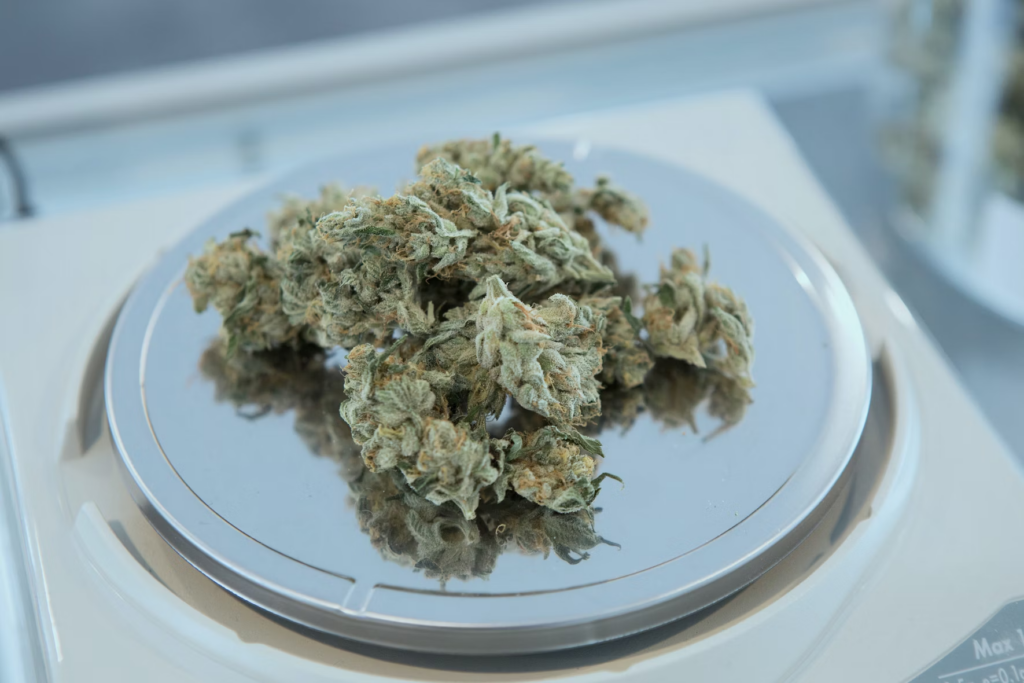
A half of weed, also known as a "half-ounce," is a significant amount of cannabis that can provide a steady supply for those who use weed regularly or for parties and events. It's equivalent to 14 grams, making it a more cost-effective way to purchase larger quantities of weed than buying smaller amounts.
For those who use cannabis regularly, a half of weed can last for several weeks or even months, depending on how much they use per session. It's a great way to save money on cannabis purchases in the long run by buying in bulk. Additionally, it reduces the need for frequent trips to a dispensary or delivery service, making it a convenient option for those who want to stock up on cannabis.
A half of weed is also an ideal measurement for parties or events where multiple people will be using cannabis. It provides enough cannabis to share with friends and can make for a memorable experience. However, it's important to note that sharing cannabis is not legal in all states and it's essential to check the local laws before doing so.
It's crucial to check the quality and prices of the product before making a purchase to ensure that you're getting the best value for your money. Different strains of cannabis may have different potencies and effects, so it's important to choose the right one for your needs.
An ounce of cannabis is a significant amount of cannabis and is equivalent to 28 grams. It's a measurement that's commonly used by dispensaries and cannabis businesses that operate on a larger scale. An ounce of weed can last for a considerable amount of time, making it a cost-effective option for those who use cannabis regularly or for medical purposes.
Purchasing an ounce of weed can also be a convenient option for those who don't want to make frequent trips to a dispensary or delivery service. However, it's essential to check the quality and prices of the product before making a purchase to ensure that you're getting the best value for your money. Different strains of cannabis may have different potencies and effects, so it's important to choose the right one for your needs.
On an even larger scale, a pound of weed is equivalent to 16 ounces or 448 grams. This measurement is typically used by larger cannabis businesses or operations that require large quantities of cannabis for production purposes. It's not a measurement that's commonly used by individual users or for personal consumption, but it's an important unit of measurement within the cannabis industry.
Whether you're purchasing an ounce of weed or a pound of weed, it's important to understand the potential health benefits and risks associated with cannabis use. While cannabis can be a valuable tool for managing medical conditions, it can also have adverse effects if not used responsibly. It's essential to consult with a healthcare professional before using cannabis to treat a medical condition and to be aware of the potential risks.
In conclusion, an ounce of weed and a pound of weed are two important units of measurement within the cannabis industry. They're typically used by dispensaries, larger cannabis businesses, or operations that require large quantities of cannabis for production purposes. While purchasing in bulk can be a cost-effective option, it's important to check the quality and prices of the product before making a purchase to ensure that you're getting the best value for your money.

When it comes to purchasing cannabis products, it can be helpful to consult with a budtender. These individuals are typically employed by dispensaries and have extensive knowledge about different strains of weed, as well as their effects and potential medicinal benefits. They can help you navigate the sometimes overwhelming variety of cannabis products available and assist you in selecting the right measurement for your needs.
Budtenders can be especially helpful when it comes to selecting the appropriate strain of cannabis for a particular medical condition. For example, certain strains of cannabis may be more effective in treating chronic pain, anxiety, or depression. A budtender can guide you through the process of selecting the right strain for your particular needs, as well as help you determine the appropriate measurement.

Checking the label is especially important if you're purchasing cannabis products for medical purposes, as the right dosage can be critical for treating certain conditions. It's important to make sure that you're getting the correct amount of cannabis so that you can achieve the desired effects and experience the potential medicinal benefits.
In addition to ensuring that you're getting the right measurement, checking the label can also help you compare prices and make informed purchasing decisions. By knowing the exact amount of weed in a particular product, you can calculate the price per gram or ounce and compare it to other products or dispensaries.
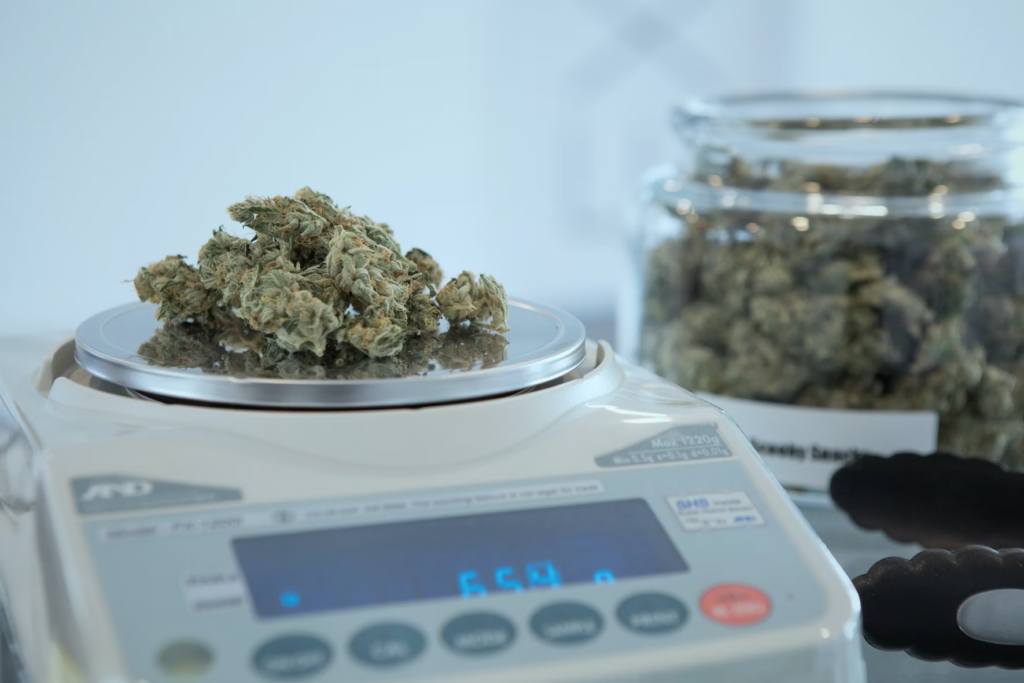
If you're looking to ensure that you're getting the right measurement of weed, investing in a scale can be a wise choice. While most dispensaries label their products with the correct measurements, it's always a good idea to double-check to make sure you're getting what you paid for.
Using a digital scale is an easy and accurate way to weigh your weed. It's important to note that not all scales are created equal, and some may be more precise than others. Look for a scale that measures to at least one decimal point, such as 0.1 grams, to ensure that you're getting an accurate reading.
A scale can also help you manage your usage and avoid overconsumption, which can lead to adverse effects. By weighing out the right amount of weed, you can ensure that you're consuming a consistent dosage and avoid accidentally consuming too much.
Additionally, a scale can be a helpful tool for those who use cannabis for medical purposes. For example, if you're using cannabis to manage a specific medical condition, it may be important to consume a precise amount of cannabis to achieve the desired effects.
Overall, investing in a scale is a small but important step in ensuring that you're getting the right measurement of weed and consuming cannabis safely and responsibly.
If you're considering using cannabis for a medical condition, it's important to be aware of potential adverse effects and to consult with a healthcare provider before trying any treatments. However, research suggests that cannabis may have therapeutic potential for a range of conditions, from chronic pain to epilepsy to anxiety.
While some studies have shown that cannabis use may be associated with increased risk for certain diseases and conditions, other research suggests that it may have therapeutic potential for treating certain symptoms and improving quality of life. However, it's important to be aware of the potential adverse effects of cannabis use, such as impaired cognitive function and respiratory problems.
Weed measurements are an important part of purchasing and consuming marijuana. Whether you're a recreational user or using it for medical purposes, it's important to understand the different measurements and how to check them. By following these tips, you can make sure you're getting the right amount of weed and getting the most out of your purchase.
If you're interested in purchasing cannabis products, DC Collective is a reputable online service that offers convenient delivery options. It's important to ensure that you're getting the correct measurements and strains for your needs, and DC Collective can provide you with the right information and guidance to make informed decisions. With the potential therapeutic benefits of cannabis, including managing medical conditions and improving overall health and well-being, it's essential to purchase from a trustworthy source like DC Collective to ensure the highest quality and safety standards.
Chronic pain is a common symptom experienced by millions of people around the world. It can affect daily life and lead to decreased quality of life. However, medical cannabis may offer potential benefits for chronic pain patients. Cananabis-based medicines contain active compounds, such as THC and CBD, that interact with the body's cannabinoid receptors, which may help reduce pain severity and improve other symptoms. In this blog, we will explore the potential benefits of THC and CBD for chronic pain management, the medical conditions that cannabis-derived products may help with, and the adverse effects and legal concerns surrounding their use. We will also discuss the different forms of medicinal cannabis available, the starting dose, and the daily dose of THC and CBD ratio for pain relief.

THC and CBD are both cannabinoids found in cannabis plants, and they have gained a lot of attention for their potential therapeutic benefits, particularly for pain relief. Both compounds interact with the endocannabinoid system (ECS) in the human body, which is responsible for regulating various functions such as pain, inflammation, and immune response.
THC is known for its psychoactive effects, and it has been found to offer pain relief by binding to CB1 receptors in the brain and nervous system. When THC binds to these receptors, it can produce feelings of euphoria or relaxation, which can help alleviate body pain symptoms. This mechanism of action makes THC particularly useful for pain caused by conditions such as neuropathic pain, which can be difficult to manage with traditional pain medications.
CBD, on the other hand, may offer pain relief by interacting with the TRPV1 receptor, which is involved in pain signaling. This receptor plays a crucial role in the perception of pain and inflammation, and when CBD interacts with it, it can help reduce pain and inflammation. CBD has also been found to have anti-inflammatory properties, which can be particularly useful in managing pain caused by conditions such as people with arthritis.
Another important aspect of THC and CBD for pain relief is their different ratios and doses. The right combination of THC and CBD, as well as the right dosage, can have a significant impact on the effectiveness of pain relief. Additionally, the way that THC and CBD are consumed can also have an impact on their pain-relieving properties. For example, smoking or vaporizing cannabis may produce more immediate effects, while ingesting cannabis-based products may produce longer-lasting effects.
It's important to note that while THC and CBD have shown promise for pain relief, more research is needed to fully understand their mechanisms of action and potential benefits. Additionally, cannabis-based medicines may not be suitable for everyone and may have adverse effects, particularly when used in high doses or with other medications such as blood thinners.
Overall, the potential benefits of THC and CBD for chronic pain management are promising, and many medical professionals see them as a potential alternative to opioids. However, it's important to consult with a healthcare provider before using cannabis-based products for body pain relief and to carefully consider the potential benefits and risks.

Cannabidiol (CBD) has been gaining attention in recent years for its potential therapeutic effects on various health conditions, including chronic pain. Several studies have suggested that CBD may help reduce pain and inflammation by interacting with the body's endocannabinoid system and other receptors, such as the serotonin and vanilloid receptors.
One study published in the European Journal of Pain found that CBD applied topically to the skin could help reduce pain and inflammation associated with arthritis. Another study published in the Journal of Experimental Medicine suggested that CBD may help reduce chronic pain and neuropathic pain by targeting the alpha-3 glycine receptors.
CBD may also be effective in managing symptoms of multiple sclerosis and fibromyalgia, which are two conditions that are known to cause chronic pain. In a study published in the Journal of Clinical Pharmacy and Therapeutics, researchers found that CBD reduced pain and spasticity in people with multiple sclerosis. In another study published in the Journal of Pain Research, researchers found that CBD may improve the quality of life in people with fibromyalgia.
While these studies provide promising results, more research is needed to fully understand the potential therapeutic effects of CBD on chronic pain and related conditions. It's also important to note that CBD may interact with certain medications, such as blood thinners, and should be used with caution. As always, it's best to consult with a healthcare professional before using CBD or other cannabis-based medicines for chronic pain management.

CBD has emerged as a potential alternative treatment for chronic pain, particularly in cases where conventional pain management methods are ineffective or have adverse side effects. Studies have shown that CBD may help reduce pain and inflammation by interacting with various receptors in the body, including the endocannabinoid system, which is involved in regulating pain and inflammation.
Research has also shown that CBD may be effective in managing pain associated with conditions such as multiple sclerosis and fibromyalgia. For instance, a study published in the Journal of Clinical Pharmacy and Therapeutics found that CBD, when combined with THC, could significantly reduce pain intensity and improve sleep quality in patients with multiple sclerosis. Similarly, a review of existing literature found that CBD may be beneficial in managing pain and improving quality of life in patients with fibromyalgia.
Overall, while more research is needed to fully understand the therapeutic potential of CBD for chronic pain, the existing evidence suggests that it may be a promising option for those seeking alternative forms of pain management.

When it comes to choosing between THC and CBD for pain relief, it's important to consider your individual preferences and needs. Both compounds interact with the endocannabinoid system in the body, which can help regulate pain and inflammation. However, THC is known for its psychoactive effects, which can cause altered perception and mood changes, making it less tolerable for some individuals. On the other hand, CBD is non-intoxicating and may be more suitable for individuals who want to avoid psychoactive effects or who have conditions that cause inflammation.
It's also important to note that THC may be more effective for certain types of pain, such as nerve pain. In a clinical study, patients with neuropathic pain who used cannabis-based medicines containing THC experienced significant improvement in pain severity compared to those who used a placebo. However, the study also reported adverse effects, such as dizziness and drowsiness.
CBD, on the other hand, has been studied for its potential therapeutic effects on various pain conditions, including multiple sclerosis and fibromyalgia. Some human studies have reported moderate improvements in pain symptoms with the use of CBD oil for pain management. Additionally, CBD has been investigated as an alternative to opioids for chronic pain management, with some research suggesting that it may have fewer adverse effects and lower risk of addiction compared to opioids.
Ultimately, the choice between THC and CBD for pain relief should be made in consultation with a healthcare professional, taking into account the potential beneficial effects and adverse effects of each compound, as well as any legal concerns and individual medical conditions.
Both THC and CBD may cause side effects, such as dry mouth, dizziness, and changes in appetite. THC may also cause psychoactive effects, such as altered perception and mood changes. It's important to consult with a healthcare provider before using cannabis products for pain relief. Additionally, the legality of cannabis products may vary depending on the state or country.

When it comes to choosing a THC or CBD product for pain relief, it's important to consider your individual needs and preferences. There are a wide variety of products available, each with their own unique benefits and drawbacks. For example, THC may be more effective for certain types of pain, such as nerve pain, but it can also cause psychoactive effects that some individuals may not tolerate. On the other hand, CBD may be more suitable for individuals who want to avoid psychoactive effects or who have conditions that cause inflammation.
It's also important to consider the form of the product. Tinctures, topicals, and edibles are just a few of the many options available. Topical CBD products may be more suitable for localized pain, while edibles may be more convenient for individuals who want a long-lasting effect.
Ultimately, the choice of THC or CBD product will depend on your specific needs and preferences. It's always a good idea to consult with a healthcare provider to determine the best course of action for managing your chronic pain.
In conclusion, the potential therapeutic effects of THC and CBD for chronic pain have been extensively studied and show promise in providing relief for individuals suffering from this debilitating condition. However, it's crucial to approach the use of cannabis products with caution and responsibility. It's essential to consult with a healthcare provider before trying any cannabis product, and choosing the right product that suits your needs and preferences is also important.
Furthermore, it's important to be mindful of the potential side effects associated with the use of medical cannabis products, such as drowsiness, dry mouth, and impaired cognitive function. It's also crucial to be aware of the legal status of cannabis products in your region and ensure that you are purchasing products from reputable sources.
If you're interested in exploring the potential benefits of cannabis products for pain relief, we encourage you to visit DC Collective, a trusted and reputable dispensary that offers a wide range of high-quality cannabis products. Their knowledgeable staff can help guide you in selecting the right product to suit your needs and answer any questions you may have. Take the first step towards finding relief today by visiting DC Collective.

Terpenes are a diverse group of organic compounds found in many plants, including fruits, vegetables, herbs, and spices including cannabis. They are responsible for the distinct aromas and flavors of these plants and play a vital role in pollination, plant defense, and attraction of beneficial insects.
The cannabis plant is known for containing a variety of terpenes, including alpha-humulene. Alpha-humulene is one of the most abundant terpenes found in the hops plant, which is closely related to the cannabis plant.
By understanding the benefits of terpenes and alpha-humulene, you can enhance your self-care routine and potentially improve your overall health and well-being.
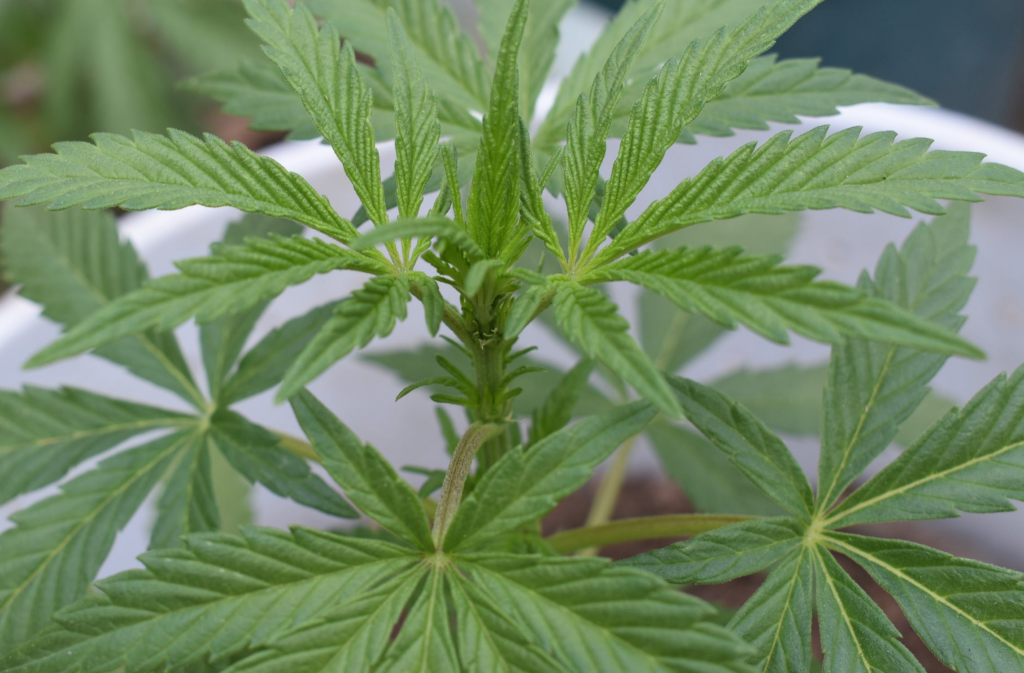
Alpha-humulene terpene is abundant in several cannabis strains, including sativa strains like Golden Haze and hybrid strains like Bubba Kush. It is often found in strains that have a pungent aroma, and it is a common ingredient in many flavor profiles. Humulene terpene can also be found in other plants, such as cordia verbenacea and hops.
One of the primary benefits of alpha-humulene is its anti-inflammatory properties. It has been shown to inhibit the production of pro-inflammatory cytokines, making it a potentially useful therapeutic agent for conditions such as arthritis and other inflammatory diseases. Additionally, alpha-humulene has been found to have anti-tumor effects, making it a promising candidate for cancer treatment.
Humulene terpene is a versatile compound that can be used in various ways to achieve different therapeutic benefits. Here are just a few ways to use humulene terpene:
Aromatherapy
One of the most popular ways to use humulene terpene is through aromatherapy. You can add a few drops of humulene terpene essential oil to a diffuser or vaporizer to inhale its aroma, which can have a calming or uplifting effect on your mood and emotions.
Topical Application
Topical application is another way to use humulene terpene, which involves diluting the essential oil with a carrier oil such as coconut or almond oil before applying it to the skin. This method can be useful for treating skin conditions such as acne, eczema, and psoriasis, as well as for relieving joint and muscle pain. You can also use humulene terpene in a bath by adding a few drops to warm water and soaking for 20-30 minutes for a relaxing and rejuvenating experience.
Edibles
Humulene terpene can also be ingested, either by adding it to your food or drinks or by taking it in capsule form. When ingested, humulene terpene can potentially provide a wide range of therapeutic benefits, including reducing inflammation, improving digestion, and lowering cholesterol levels.
While humulene terpene is generally considered safe for most people, it is essential to exercise caution when using it, especially if you have any underlying medical conditions or are taking medications. It is always advisable to seek medical advice before using humulene terpene or any other natural remedy to avoid any potential interactions or adverse effects.

Recent research on humulene terpene has revealed several promising potential health benefits. For instance, studies have indicated that humulene terpene has anti-inflammatory properties, which may make it a valuable natural remedy for conditions such as arthritis, asthma, and inflammatory bowel disease. Moreover, research has also shown that humulene terpene may possess anti-tumor properties, potentially making it useful in the treatment of certain types of cancer.
Furthermore, humulene terpene may have a positive impact on mental health as well. Some studies have suggested that this terpene may be effective in reducing anxiety and depression symptoms, making it a natural option for those who prefer to avoid pharmaceutical treatments or are seeking complementary therapy options.
The therapeutic benefits of humulene terpene are likely due to its ability to interact with the body's endocannabinoid system, which is responsible for regulating a variety of physiological processes, including mood, pain perception, and immune function. However, it is important to note that more research is needed to fully understand the potential health benefits of humulene terpene, and it should not be considered a replacement for medical advice or treatment.
Overall, the growing body of research on humulene terpene highlights its potential as a valuable natural remedy for a wide range of conditions. However, as with any natural remedy, it is crucial to approach its use with caution and seek professional medical advice before incorporating it into your healthcare routine.
Q: What is humulene terpene?
A: Humulene terpene is a common terpene found in many plants, including the cannabis plant and hops plant. It is known for its herbal and earthy aroma.
Q: What are the benefits of humulene terpene?
A: Humulene terpene has several potential health benefits, including anti-inflammatory and anti-tumor effects, and may help reduce cholesterol levels and blood pressure.
Q: How do I use humulene terpene?
A: Humulene terpene can be used in a variety of ways, including aromatherapy, ingestion, and topical application.
Q: Is humulene terpene safe?
A: While humulene terpene is generally considered safe, it is important to take certain precautions when using it and to seek medical advice if necessary.
Q: What strains of cannabis contain humulene terpene?
A: Humulene terpene is abundant in many strains of cannabis, including sativa strains like Golden Haze and hybrid strains like Bubba Kush.
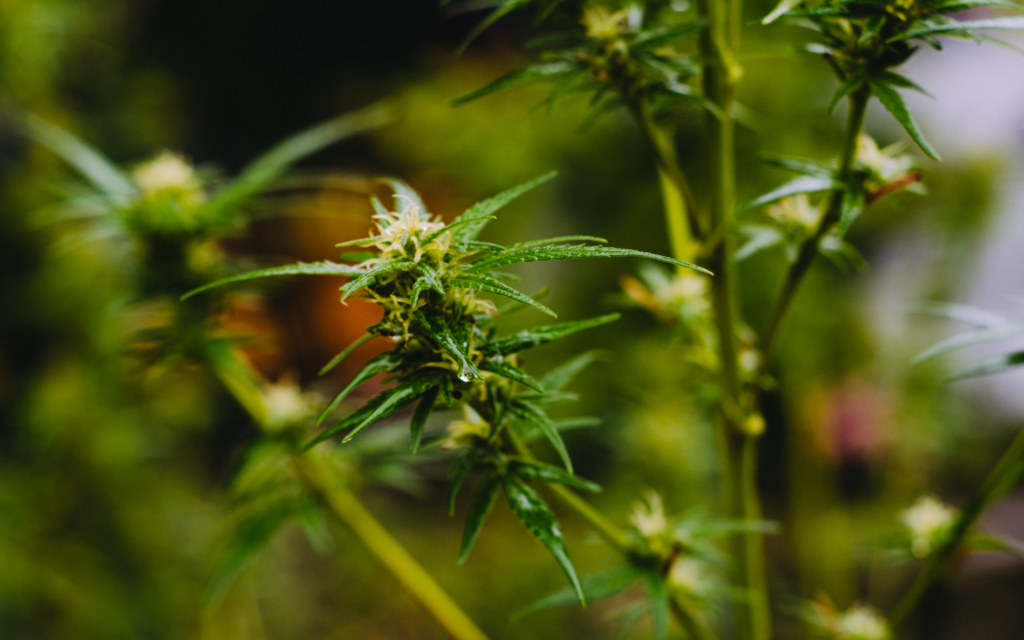
In conclusion, humulene terpene is a fascinating and potentially beneficial compound found in several cannabis strains and other plants. With its herbal and earthy aroma and a growing body of research indicating its therapeutic potential, it is no surprise that many people are interested in incorporating it into their self-care routines.
If you're interested in exploring the potential benefits of humulene terpene, we encourage you to visit DC Collective, a leading marijuana dispensary that offers a wide selection of high-quality cannabis strains rich in humulene terpene and other beneficial compounds. Their knowledgeable staff can help you find the right strains and products to suit your needs and preferences, whether you're looking for relief from pain, anxiety, or other health conditions, or simply want to enhance your overall well-being.
At DC Collective, you can rest assured that you're getting the highest quality products and expert guidance, so why not take the first step towards a healthier, happier you and visit them today?
If you're new to the world of cannabis, you may be wondering what exactly edibles are. Simply put, edibles are cannabis-infused food products, typically in the form of THC (tetrahydrocannabinol), the psychoactive compound that produces the "high" associated with cannabis use.
For first-time consumers or those who don't enjoy smoking cannabis, edibles can be a great way to experience the benefits of cannabis without the potentially adverse effects of smoking. Edibles come in a variety of forms, including cannabis-infused butter, cannabis oils, and cannabis concentrates.
One of the key benefits of cannabis-infused edibles is that they offer consumers a discreet and convenient way to consume cannabis without the need for smoking or vaping, which can be unpleasant or impractical for some people. Edibles are also typically more potent than other forms of cannabis, with effects that can last for several hours or more, making them a popular choice for both medical and recreational users.
However, it's important to note that edible cannabis products can be more difficult to dose accurately than other forms of cannabis, which can lead to overconsumption and uncomfortable or even dangerous side effects. For this reason, it's essential to start with a low dose of edibles and wait for the effects to kick in before consuming more, and to always choose high-quality products from reputable sources to ensure safety and consistency.

When you consume cannabis edibles, the THC and other cannabinoids are absorbed through your digestive system, which can lead to a slower onset of effects compared to smoking or vaping and makes it easier to feel psychoactive effects in their totality. This is because the THC must first pass through your liver, where it is metabolized into a different compound, 11-hydroxy-THC, which is more potent and longer-lasting than the original THC.
The time it takes for edibles to take effect can vary widely depending on several factors, including the individual's metabolism, the potency of the edibles, and whether they are consumed on an empty or full stomach. In general, you can expect to feel the effects of edibles within 30 minutes to 2 hours after consumption, with peak effects occurring between 2 and 4 hours after consumption. It's important to be patient when consuming edibles, as it can be tempting to consume more if you don't feel the effects right away, which can lead to overconsumption and negative side effects.
Another important thing to consider when consuming edibles is the dosage. Edibles are typically more potent than other forms of cannabis, and it can be easy to accidentally consume too much if you're not careful. It's important to start with a low dose, typically around 5-10mg of THC, and wait for the effects to kick in before consuming more. This will help you avoid overconsumption and ensure a safe and enjoyable experience.
In addition to the slow onset and potent effects of edibles, it's also worth noting that the effects can last much longer than other forms of cannabis, often up to 6-8 hours or more. This can make edibles a popular choice for people who are looking for longer-lasting relief from pain, anxiety, or other conditions, but it also means that it's important to plan ahead and be prepared for the effects to last for an extended period of time.
When it comes to choosing the right edible and edible form, it's important to consider the cannabinoid ratio, which is the ratio of THC to other cannabinoids like CBD. Experienced consumers may prefer a higher THC ratio for a more intense cannabis experience, while those with medical conditions may benefit from a 1-to-1 ratio or higher CBD ratio. Here are some things to keep in mind:
By keeping these factors in mind, you can choose the right edibles for your individual needs and preferences, and enjoy a safe and enjoyable experience.

It's also important to be aware of the effective dose of edibles, as consuming too much THC can lead to negative side effects. The edible dosage calculator can help you determine the appropriate dosage for your needs based on your tolerance and desired effects. Here are some tips for dosing edibles safely:
Be patient: As we mentioned earlier, edibles can take a while to take effect, and it can be tempting to consume more if you don't feel the effects right away. However, this can lead to overconsumption and negative side effects. Be patient and wait for the effects to kick in before consuming more.
Don't mix with alcohol: Mixing edibles with alcohol can increase the risk of negative side effects, as both substances can have sedative effects and impair your ability to function. It's best to avoid consuming edibles and alcohol at the same time.
Know your limits: Everyone's tolerance to cannabis is different, and it's important to be aware of your own limits when it comes to edibles. If you're new to edibles, start with a low dose and gradually increase as needed. If you have a low tolerance or are sensitive to the effects of cannabis, it's especially important to start with a low dose and be cautious when consuming edibles.
Keep track of your dosage: When consuming edibles, it can be easy to lose track of how much you've consumed, especially if you're snacking on multiple servings throughout the day. Keep track of your dosage by writing it down or using a dosing calculator to ensure you don't accidentally overconsume.
By following these tips, you can dose edibles safely and avoid overconsumption and negative side effects, while still enjoying the many benefits of cannabis-infused treats.

One of the most important things to understand about edibles is that they can take a while to take effect, often much longer than other forms of cannabis. This can be confusing and even frustrating for new consumers, but it's essential to be patient and understand the timeline for edibles. Here are some things to keep in mind when it comes to the onset time for edibles:
The effects of THC can vary depending on the consumption method, and the edible experience is no different. When you consume an edible, the effects may take longer to kick in, but they can also last longer than smoking cannabis. It's important to start with a low dose and wait at least 2 hours before consuming more to avoid overconsumption and potential cannabis overdose.

Edibles have become a popular way to consume cannabis, especially for those who are looking for a smoke-free alternative. But how do cannabis-infused edibles affect your health?
The good news is that edibles can provide many of the same benefits as other forms of cannabis, such as pain relief, anxiety reduction, and improved sleep. They can also be a good option for people who don't want to smoke or inhale cannabis.
However, it's important to be aware that edibles can have different effects on your body than smoking or vaping. When you consume an edible, the THC is absorbed through your digestive system and processed by your liver before it enters your bloodstream. This can take longer to kick in than smoking or vaping, and the effects can last longer as well.
It's also important to be aware of the dosing of the edibles you consume, as consuming too much THC can lead to negative side effects such as nausea, dizziness, and anxiety. It's a good idea to start with a low dose and wait at least 2 hours before consuming more to avoid overconsumption.
It's worth noting that edibles can be high in sugar and calories, so it's important to be mindful of your overall diet and exercise habits when consuming them. Additionally, some edibles may contain cannabis extracts that are more potent than smoking cannabis, so it's important to be aware of the THC ratio and dosage.
In summary, edibles can be a safe and effective way to enjoy the benefits of cannabis, but it's important to be aware of their adverse effects on your body and to consume them responsibly. If you have any concerns about consuming edibles or their effects on your health, it's always a good idea to talk to your healthcare provider before trying them.
In summary, edibles can be a safe and enjoyable way to consume cannabis, but it's important to be informed and consume them responsibly. If you're a first-time consumer or have any concerns about the effects of edibles on your health or medical conditions, it's always a good idea to talk to your healthcare provider before trying them. DC Collective, a trusted marijuana dispensary, can also provide guidance on choosing the right edibles and ensuring a safe and enjoyable cannabis experience.
When it comes to choosing and consuming edibles, it's also important to choose high-quality products from a trusted source. DC Collective is a marijuana dispensary that offers a wide variety of cannabis-infused treats, including edibles that are carefully crafted to provide a consistent and enjoyable experience. Their knowledgeable staff can help you choose the right products for your needs and answer any questions you may have about dosing, onset time, and other important factors.

⚠️WARNING: Products sold on this site can expose you to chemicals including marijuana smoke, which are known to the State of California to cause cancer. For more information, go to http://www.P65Warnings.ca.gov
License #C12-0000022-LIC HOURS OF OPERATION: Mon-Thu 7am – 9pm
Fri-Sat 7am – 10pm
Sun 9am – 8pm